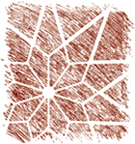December 2, 2024
On Thanksgiving Day, people gathered on Cole’s Hill in Plymouth for the annual Day of Mourning. This tradition was established in 1970, spearheaded by Wamsutta (Frank) James, a Wampanoag and activist. James’s son, Moonanum James, now organizes the event.
Prayers for this day often include remembering the losses of Indigenous communities, and praying for healing, truth-telling, and the capacity to be instruments of justice during our lives.
More recently scholars in religious studies have advocated for the study of “living religion” or religion as practiced. The practice of praying for Indigenous peoples was often the first step in a journey of contact with Christianity. Conversion narratives by John Eliot and Thomas Mayhew illustrate the co-existence of traditional and Christian thought and practice as they engaged with missionaries.
In this vein, we recommend David Silverman’s This Land is Their Land: The Wampanoag Indians, Plymouth Colony, and the Troubled History of Thanksgiving (New York: Bloomsbury, 2019). Silverman notes that in early times, Wampanoags “turned the missionaries religion into a new way to express indigenous truths by melding Wampanoag religious concepts and truths with their rough Christian equivalents…some Wampanoags found Christianity to be a means of reinvigorating old religious ideas to meet the stresses of a new era.” (p. 243) There were other practical reasons, of course, to engage with missionaries, and over time, relationships between the two cultures became increasingly strained. By 1677, 10 of the 14 praying towns in Massachusetts were disbanded.
–Mary Beth Clack, Mary Blocher, Cindy Coldren, Pat Krol, Liz Levin
–Published in This Week @Emmanuel Church, December 5, 2024.

